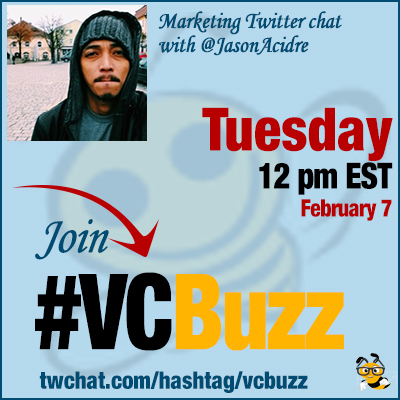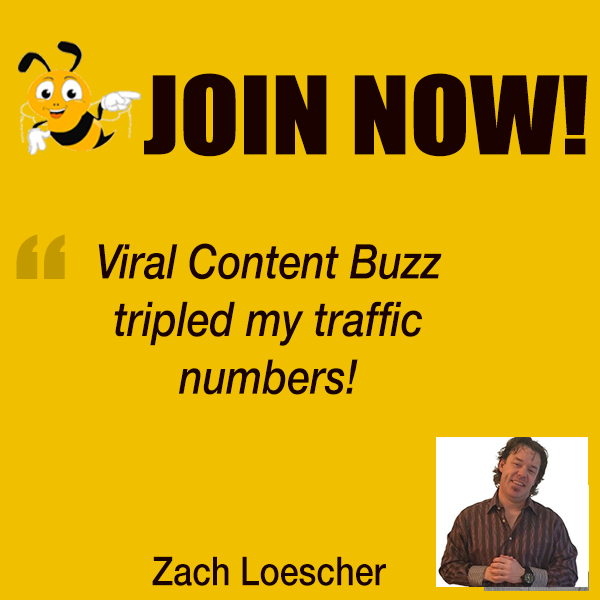 Links are still the most important ranking factor. And while we perfectly know what we are not supposed to do to get people link to our sites, we still need to find the ways to build those links in order to rank. Let’s talk about that today!
Links are still the most important ranking factor. And while we perfectly know what we are not supposed to do to get people link to our sites, we still need to find the ways to build those links in order to rank. Let’s talk about that today!
***Add #VCBuzz chats to your calendar here.
***Please sign in here to follow the chat -> twchat.com/hashtag/vcbuzz
About Jason
.@JasonAcidre is co-founder and CEO at @xightph and author of @kaiserthesage, Philippines’ premier inbound marketing blog. Jason is the author behind some excellent content pieces
Read Jason’s interviews and testimonials here.
Questions we discussed
Q1 How did you become a digital marketer? What’s your career path?
I worked as a part-time technical writer back in 2007, while I was still active in pro-gaming (counterstrike).
Started my own writing team in mid ‘08. Failed twice in putting up 2 businesses. Decided to have a fresh start in 2010.
I applied for a writing position for an Australian SEO agency. Their recruiters figured my profile was a better fit for SEO. Didn’t know what SEO is during that time. But the offer did pique my interest, so I decided to take the leap.
2 months after being an SEO, I decided to start my own blog, so I can freely do my own experiments.
Now, I’m focused on growing our digital marketing agency (Xight) & been spending more time in building our own web properties.
So I guess, that’s where my career as a digital marketer is headed.
Q2 When you start working on a new client’s links, where do you start?
Content inventory – it’s imperative to check if they have linkable content assets in place that can be leveraged for outreach.
Content inventory – it’s imperative to check if they have linkable content assets in place that can be leveraged for outreach.
We list down potential assets from the site that we can use or further improve (to make them more linkable). It’s important to understand how their content is providing unique value to its target audience…(if it’s not, that’s where you want to start).
Then we compare their content with what their top competitors have. See what’s missing.
Try to provide the missing piece – to ensure that we have something people won’t see elsewhere.
Once we have that covered, we can start reaching out to sites that have linked to competitors’ similar content. The goal is to make the content assets rank highly for informational queries because that’s how you can scale your link building efforts.
That’s when your content can start to earn more links.
QUALITY CONTENT is 700+ words, preferably more, containing current statistics and visual media (images, SlideShare, video) #content #vcbuzz
— Gail Gardner (@GrowMap) February 7, 2017
Why do SEOs focus on reaching out to sites that have linked to competitors? Because they’re easier to find? @jasonacidre #SEO #vcbuzz
— Gail Gardner (@GrowMap) February 7, 2017
They already have a history of showing interest on the topic/content – will have higher response rates most of the time. Another good trick is finding people who have shared competitors’ content on social media – they’ll possibly share. Your content too, especially when it’s better.
Q3 You have an awesome prospecting flowchart. Could you describe how prospecting works?
Prospecting is simply knowing which sites/brands you want your site to be associated with (through linking).
Getting links can get you referral traffic, help shape brand perception, and establish a site’s authority/expertise.
It’s also a very vital process, that’s why prospecting is usually done in the initial stage of the campaign. Because identifying which publications your site should be visible in essentially dictates what strategies you can execute on.
And this is the stage where you usually can better understand the market needs and gaps that your brand can fill in.
How it works: find the sites where your target audience most likely visit. Make a list of them (including their contact details). Determine how you can provide value to their audience (which are your target as well).
Internally, we factor in several metrics to ensure the quality of the sites we’re targeting. Metrics: DA (domain authority), Traffic (via Ahrefs/SEMrush), and Content Quality should be a good start.
Lastly, is to evaluate the best way you can acquire links from them. Could be via guest blogging, resource/broken links, partnerships, etc… in which content will still play a huge part (that’s why uniquely valuable – not just “great” – content is very important!)
What tool do you use to check DA, @jasonacidre? #vcbuzz
— Don Sturgill (@DonSturgill) February 7, 2017
@DonSturgill check out Mozbar https://t.co/QgSZsoHRAk #vcbuzz
— Jason Acidre (@jasonacidre) February 7, 2017
Q4 What types of link building outreach work best for link building?
Content-based link building is definitely on top of my list.
- Start by creating content that’s way better than what your competitors have.
A4: …See skyscraper technique by @backlinko: https://t.co/1A9VRw9lcn #vcbuzz
— Jason Acidre (@jasonacidre) February 7, 2017
- Promote it through manual outreach – find resources pages that will want to include your content on their list.
- Do guest blogs, where you can effectively promote your content asset as well.
If you’re content is designed to be genuinely useful, you’ll have better chances of landing links on relevant pages from .edu and as I’ve mentioned earlier: reach out to those who have linked to your competitors in the past. If your content is better, they will likely link to you as well.
People need to understand that contributing authors on larger sites can NOT add your resource to anything already published. #vcbuzz
— Gail Gardner (@GrowMap) February 7, 2017
You can also invest on social ads (FB/Twitter/Stumbleupon) to put more eyeballs to your content (more linking opportunities).
QUALITY #CONTENT is 700+ words, or more, containing current #statistics & #visual media (images, SlideShare, video) #vcbuzz @GrowMap #smm
— Zen Yinger (@ZenYinger) February 7, 2017
Yup, great insights! RT @ZenYinger: Enjoying #links #seo #content new learning from you today @jasonacidre TY! ? #vcbuzz
— Jessy Troy (@jessytroy) February 7, 2017
Q5 What are your favorite link building and content marketing tools?
A5: Ahrefs, https://t.co/9Pg5keQFju, and SEMrush. Ton of useful data too from Analytics and Search Console (for content marketing). #vcbuzz
— Jason Acidre (@jasonacidre) February 7, 2017
Especially with your internal site search data via GA – can literally spell out the topics that your readers are looking for.
Slideshare presentations are also a good place to get inspiration for content ideas (esp for industries you know nothing about).
In terms of SEO, what ancillary content does your firm prefer to create and post? #vcbuzz
— 24 Hour Translation (@24hrtranslation) February 7, 2017
Depends on the industry – but practical comprehensive guides/tutorials with visual content usually works well.
.@jasonacidre: This is off topic but do you look at @flipboard magazines for inspiration? #vcbuzz
— Janette Speyer (@websuccess) February 7, 2017
No, something I haven’t tried actually (thanks for the tip). Although, I do get ideas from other verticals (sports).
Yup, my fav tools! Plus @Serpstat RT @jasonacidre: A5: @Ahrefs, @Mention, & @SEMrush => Tons of useful data #vcbuzz
— Ann Smarty (@seosmarty) February 7, 2017
NOW is the time to be on @Flipboard because when Janette @websuccess shares my content 100-129 visitors show up – far higher than Tw #vcbuzz
— Gail Gardner (@GrowMap) February 7, 2017
Wow! Made it even more interesting – will definitely test something over the weekend.
In the early days of Twitter we would immediately get tons of clicks on links – far more than today. @Flipboard is there now. #vcbuzz
— Gail Gardner (@GrowMap) February 7, 2017
Our previous link building chats:
- Chatting Links and Relationships with @JulieJoyce #VCBuzz (March 11)
- How to Make Your Content Findable with Randy Milanovic @kayak360 #VCBuzz
- Content Re-Publishing & Duplicate Content: Twitter Chat with @ErenMckay #VCBuzz
- Influencer Marketing Trends with Raymond Morin @RaymondMorinV2 #VCBuzz
- Effective Influencer Marketing: Twitter Chat with Jason Quey @jdquey #VCBuzz
- Content & Influencer Marketing Twitter Chat with Sujan Patel @SujanPatel #VCBuzz




Leave a Reply